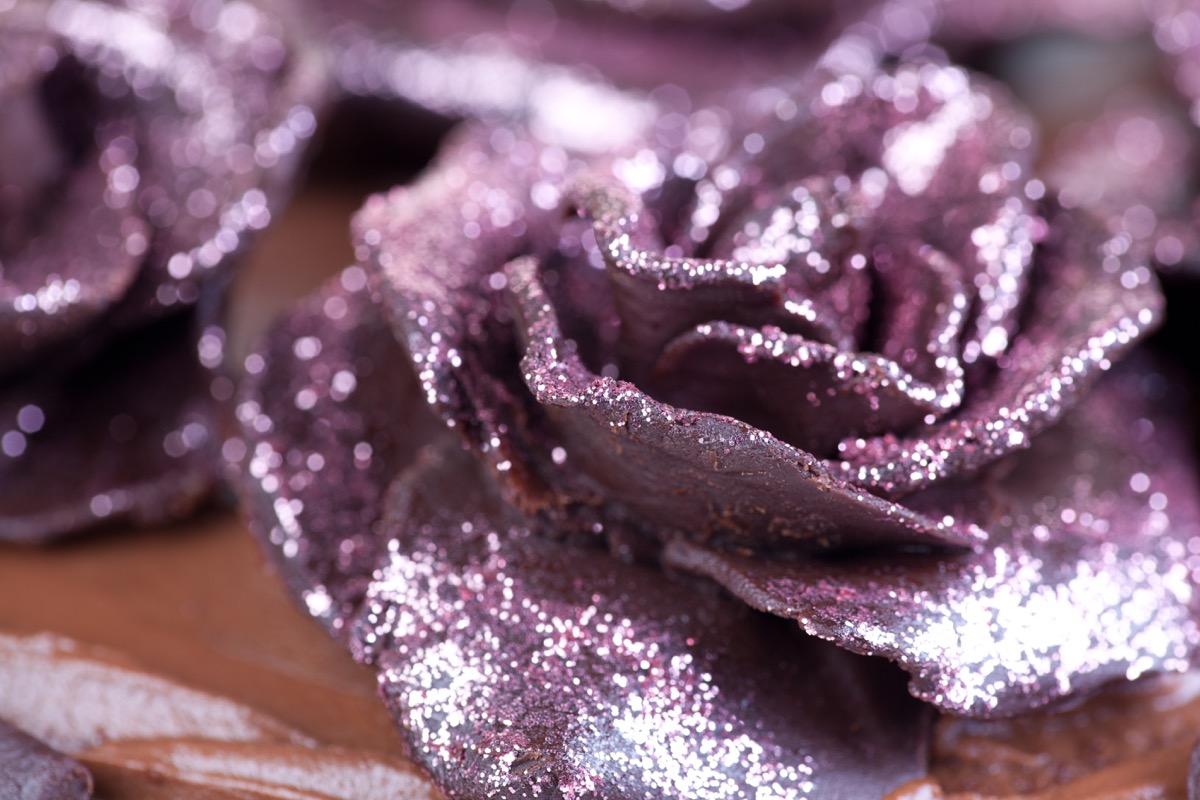Thanks to competitive baking shows, magazines, and social media, show-stopping desserts are now more popular than ever. But experts say there's one ingredient, commonly used to beautify your baking, that may be putting you at risk of serious illness. In fact, the Centers for Disease Control and Prevention (CDC) warns that it's been linked with several known cases of heavy metal poisoning.
To make matters worse, the labels on these products can be woefully misleading, leaving consumers confused about whether what they've purchased is truly safe to consume. Read on to find out which popular ingredient the CDC says is downright dangerous.
RELATED: Never Put This Common Baking Ingredient in Your Pantry, Experts Warn.

Luster dusts—typically used to add a decorative sheen or sparkle to baked goods—have gained popularity in recent years. However, the CDC warns that consuming decorative ingredients that aren't explicitly marked as edible or safe for consumption puts you at risk of serious illness.
"Labeling indicating that a product is nontoxic does not imply that the product is safe for consumption," warns the CDC. "Luster dusts that are safe for consumption are typically marked 'edible' on the label. Some luster dusts used as cake decorations are not edible or food grade; labeled as 'nontoxic' or 'for decorative purposes only,' these luster dusts are intended to be removed before consumption," the health authority adds.
RELATED: Never Wash These 4 Foods Before Cooking Them, CDC Warns.

Though use of luster dust has become widespread in the world of baking, experts say that consuming inedible versions of the product may put you at risk of heavy metal poisoning. Heavy metal poisoning occurs when the body's soft tissue accumulates toxic levels of these metals, according to the National Organization for Rare Disorders (NORD).
NORD warns that "serious damage may occur" in events of metal poisoning, with arsenic, cadmium, lead, and mercury being the metals most frequently associated with heavy metal poisoning cases. While our bodies need some heavy metals—including copper, chromium, iron, and zinc—to function, these can become toxic when present in large quantities.

In October 2018, authorities discovered the link between luster dust and heavy metal poisoning after six children fell ill with gastrointestinal symptoms after a birthday party in Rhode Island. The Center for Acute Infectious Disease Epidemiology (CAIDE), part of the state's Department of Health, traced the illness back to a single birthday cake shared by the children. It had been made by a local bakery and decorated with a product labeled "gold dust."
CAIDE interviewed four party attendees who did not become ill and learned that three had eaten the cake but not the frosting, and one had not eaten any cake at all. Ultimately, the health authorities determined that the cake had caused copper metal poisoning in all of the children who had eaten the cake's frosting. "In Rhode Island, luster dust products that had been used in cake frosting were found to contain high levels of multiple metals," the CDC explained.
The following year in Missouri, a similar case arose. A one-year-old child was found to have elevated blood lead levels, leading health authorities to test areas of the family's home for lead. Using a handheld x-ray fluorescence analyzer, they discovered that the decorative dust used to color edible flowers atop the child's birthday cake contained lead. The child experienced symptoms of neurotoxicity, despite the product being labeled "nontoxic."
For more food safety news sent directly to your inbox, sign up for our daily newsletter.

It can be difficult to trace symptoms back to heavy metal exposure because the symptoms vary depending on which type of metal is to blame. However, some common symptoms to look out for include headaches, drowsiness, confusion, seizures, respiratory difficulty, and hypotension. In many cases, patients also experience gastrointestinal symptoms, such as nausea, vomiting, diarrhea, abdominal cramps, and more.
Speak with your doctor if you suspect you've been overexposed to heavy metals, whether by ingestion or any other means. And, the next time you bake a cake, be sure to read the ingredient labels carefully—especially when decorative dusts are involved.
RELATED: If You Notice This on Your Eggs, Throw Them Out Immediately, Experts Say.
"popular" - Google News
November 06, 2021 at 07:08PM
https://ift.tt/3c2rD7f
Never Use This Popular Ingredient When Cooking, CDC Warns - Best Life
"popular" - Google News
https://ift.tt/33ETcgo
Shoes Man Tutorial
Pos News Update
Meme Update
Korean Entertainment News
Japan News Update
Bagikan Berita Ini














0 Response to "Never Use This Popular Ingredient When Cooking, CDC Warns - Best Life"
Posting Komentar